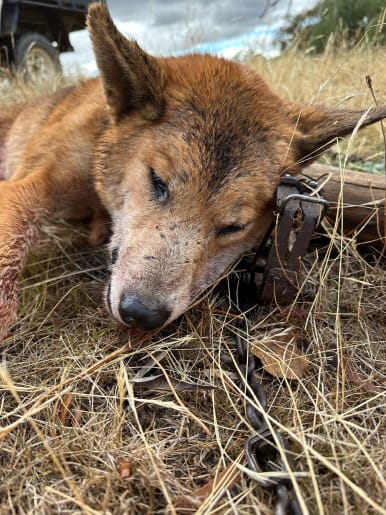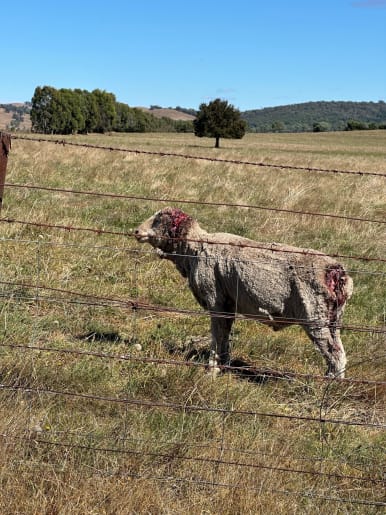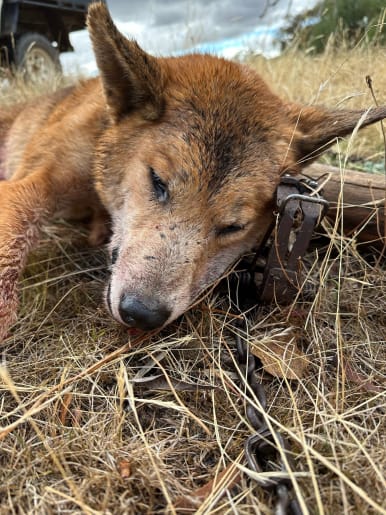North East farmers are concerned the State Government will not renew the Wild Dog Control Program after its current term ends on October 1.
Concerns have been building since mid March, when the government revoked the unprotection order for dingoes in the northwest of the state.
The revoked order was triggered by research from Arthur Rylah Institute suggesting the dingo population in the northwest was at imminent risk of extinction if threats to the population are not addressed.
A government spokesperson told North East Media that the state is “currently undertaking a comprehensive assessment of Victoria’s dingo population to guide management practices that most appropriately balance the protection of livestock and the conservation of dingoes”.
In Victoria, dingoes are listed as a threatened species under the Flora and Fauna Guarantee Act 1988, and are protected under the Wildlife Act 1975.
Latest Stories
However, there are allowances.
Currently the Wild Dog Control Program allows the control of dingoes where they threaten livestock, with wild dogs declared unprotected within a 3km Livestock Protection Buffer zone on public land in eastern Victoria, and on most private land across the state.
This is under review, with the government assessing future policy for dingo conservation and management in light of new scientific research suggesting a significantly greater proportion of Victoria’s wild dogs or dingo-dog hybrids may in fact be purebred dingoes.
Wendy Lovell, upper house MP for Northern Victoria, said she is already hearing that the Department of Energy, Environment and Climate Action - which oversees the program - “is talking to dog men about their future…. and an end to their trapping”.
“Before any decision is made ministers must hear from those who lived through the days of wanton wild dog killings, they need to see, feel and hear of the pain that this takes – both physically and emotionally,” Ms Lovell said.
Fellow Nationals’ MP for Ovens Valley, Tim McCurdy, is demanding assurance from the government that producers will be able to protect their livestock long term by keeping wild dog populations in check.
“The government refuses to provide long-term security and instead keep extending the Wild Dog Control Program in six-month blocks to appease inner-city voters who have no idea the damage these creatures do,” he said.
“I can assure farmers we will continue fighting for them so they can continue to protect their livestock and livelihoods.”
Members of the North East Wild Dog Action Group are skeptical that any promised consultation with farmers and other stakeholders will eventuate.
The group is also requesting that any data on wild dog populations in the Victorian high country and surrounding areas be made available and placed on the table for discussion.
“We are very concerned and fear the lack of support from our State Government will see the program closed, possibly overnight and before the October 1 deadline as happened in the north-west,” said Libbe Paton from the group.
“This snap decision now protects dingoes on both public and private land, leaving sheep and cattle producers unable to protect their own livestock.”
Where dingoes threaten livestock in the north-west, farmers must now apply for an Authority to Control Wildlife to use lethal control in circumstances where no other options are available.
The group - made up of a committee of proactive livestock producers - believe that non-lethal measures like exclusion fencing and guard animals do not work.
The committee is also dubious of recent research used to inform the government’s new policy of dingo protection.
“The study claims that 87 per cent of all wild dogs in Victoria are purebred dingoes compared with previous data showing one to three per cent were pure dingo,” Ms Paton said.
A further 6.5 per cent of the sample were identified as backcrosses with more than 93 per cent dingo ancestry.
“This study was based on only 62 dog samples of questionable origin in Victoria and was funded by the Dingo Conservation Foundation,” Ms Paton said.
Victorian Farmers Federation president Emma Germano said it vital farmers report all interactions with wild dogs to Agriculture Victoria, especially attacks on livestock and number of stock impacted.
“The data collected by the department is critical to us mounting a case for farmers to maintain access to the tools needed to protect livestock from predation,” she said.
“The Minister of Agriculture Ros Spence has assured the VFF that she wants to provide certainty for producers in other parts of the state around their ability to continue to manage wild dogs and dingoes.”
However, the VFF is seeking government commitment to re-establish the Wild Dog Management Advisory Committee ensuring future decisions are informed directly by the knowledge and experience of livestock producers.
The federation is also requesting commitment that wild dog management activities continue to be funded and supported by the State Government.
The National Wild Dog Action Plan is Australia’s blueprint strategy for wild dog management that guides state, regional and local plans in accordance with the principles of the Australian Pest Animal Strategy 2017-2027.
Greg Mifsud, the National Wild Dog Management coordinator believes if the Victorian Government ends the Wild Dog Control Program, there will be serious and far-reaching implications for Victoria’s wildlife, the economy and its biodiversity.
“Changes to the program would put at risk the state’s $4.5 billion sheep and wool industry and the 9200 jobs that it provides for rural Victorian residents,” said Mr Mifsud.
“Sheep and wool producers would be almost powerless to protect the welfare of their animals from wild dog attacks, which raises important questions about how we prioritise the welfare of one animal over another.
“There’s also a substantial emotional toll on producers when they experience attacks on their livestock, so it is likely we would see an increasing level of stress and impacts to producer wellbeing if the program is changed.
Government figures indicate that between 500 to 630 wild dogs are trapped per year, in addition to those that are aerial and ground baited in the livestock protection zone.
Mr Mifsud believes that available data indicates the population of dingoes in the 2.6 million hectares of public lands where no control occurs is in fact healthy and sustainable.
“Industry doesn’t want to eradicate dingoes, just control their numbers,” he said.
“The wild dog control program allows us to strike a balance between dingo conservation, the growth of the livestock industry and the protection of Victoria’s biodiversity.”
Sheep farmer protecting his herd
SHEEP farmer Steve Marshall has caught seven wild dogs this month on his Booroolite property, near Mansfield, with another four or five on his radar after cameras set up on his property captured footage of the pack.
“Out of the seven, six of them were eight or nine years old, so they’ve avoided being caught for a while,” he said.
“And six were bitches.
“It gives you a fair idea of what’s going on out there, if they each were to have six to eight pups in the spring.”
Mr Marshall said one of his neighbours lost 10 mernios to dog attacks over Easter.
“I had an incident a few years back when I bought some sheep that lambed unusually early for around here,” he said
“It was March, and once the wild dogs knew we had lambs within two weeks they had cleaned up about 70, before we eventually managed to catch them.”
Mr Marshall said the dogs were trapped over 10 kilometres away and then the killing stopped.
“I believe the problem is getting worse,” he said.


















